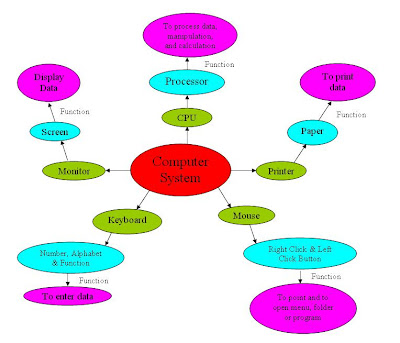The virtual experiment is from http://www.bbc.co.uk/schools/ks2bitesize/science/living_things/help_plants_grow/read1.shtml
Topic: Helping plants grow well
Introduction
Plants need air, light, warmth, water and nutrients to be healthy. If they are healthy, they can continue making their own food through photosynthesis. You can also know about the important parts of a plant - roots, leaves and the stem.
A healthy plant is upright with green leaves.




How the experiment works?
- The roots of a plant take up water and nutrients from the soil. The roots also keep the plant steady and upright in the soil; they "anchor" the plant.
- The stem carries water and nutrients to different parts of the plant.
- The leaves use light from the sun, along with carbon dioxide from the air and water to make food for the plant. This process is called photosynthesis.

Have a FUN with the game below:
What do students learn from the experiment.
From the experiment, students learn how to help plants grow well and what a plant needs to grow. Students can also observe the important parts of plant do such as stem, leaves and roots. Thus, the students will know that a plant needs air, light, warmth, water and nutrients to grow well and healthy.
The Concept Map
Questions
Must Do...
What are the basic needs of plant to grow well?
Should Do...
Give three important parts of the plant?
Could Do...
How the glucose and energy produce?
The Concept Map
Questions
Must Do...
What are the basic needs of plant to grow well?
Should Do...
Give three important parts of the plant?
Could Do...
How the glucose and energy produce?









